Subtotal: $149.70
3.3mL Flow Through Cuvette, 2 /4 Windows, QGF10A
10 mm Flow Cells are highly suitable for various inline continuous flow applications. Their unique design allows for samples to normally flow from the bottom to the top, ensuring optimal results.
$394.00 – $465.00
3.3mL Flow Through Cuvette – Elevate Your Continuous Flow Analysis
Experience the power of precise and efficient inline continuous flow analysis with the QGF10A 3.3mL Flow Through Cuvette. Designed to meet the demands of modern scientific research, this cuvette offers exceptional performance and customization options. Let’s delve into the details of this remarkable product:
Options:
- 3.3mL-Flow-4-Windows
- Volume: 3,300 μL
- Pathlength: 10 mm
- Number of Windows: 4
- Tube OD (Outer Diameter): 4 mm
- Material: Quartz
- Fabrication Type: Molded
- High Quality: Ensures superior performance and durability
- Resistant to Organic and Corrosive Chemicals: Enables compatibility with a wide range of sample types
- Dimensions (H x W x D): 45 x 12.5 x 12.5 mm
- Spectral Range: 200 – 2,500 nm
- Chamber Volume: 3,300 μL
- Detection Method: Fluorometric
- 3.3mL-Flow-2-Windows
- Volume: 3,300 μL
- Pathlength: 10 mm
- Number of Windows: 2
- Tube OD (Outer Diameter): 4 mm
- Material: Quartz
- Fabrication Type: Molded
- High Quality: Ensures superior performance and durability
- Resistant to Organic and Corrosive Chemicals: Enables compatibility with a wide range of sample types
- Dimensions (H x W x D): 45 x 12.5 x 12.5 mm
- Spectral Range: 200 – 2,500 nm
- Chamber Volume: 3,300 μL
- Detection Method: Photometric
Key Specifications:
- Volume: The cuvettes can hold a volume of 3,300 μL, allowing for ample sample size.
- Pathlength: With a fixed path length of 10 mm, precise optical measurements can be obtained.
- Number of Windows: Choose between 2 or 4 windows based on your experimental requirements.
- Tube OD (Outer Diameter): The cuvettes feature quartz flow tubes with an outer diameter of 4 mm, ensuring optimal flow conditions.
- Material: Constructed from high-quality quartz material, offering excellent optical transparency and chemical resistance.
- Fabrication Type: Molded cuvettes are carefully crafted to deliver superior performance and durability.
- Spectral Range: The cuvettes cover a wide spectral range from 200 to 2,500 nm, enabling various applications in the UV-visible region.
- Chamber Volume: The cuvettes have a chamber volume of 3,300 μL, providing sufficient space for sample analysis.
- Detection Method: Choose between photometric or fluorometric detection methods based on your experimental needs.
Customization Options: At Aireka Scientific, we understand that every research project has unique requirements. That’s why we offer comprehensive customization options for our cuvettes. Whether you need a different chamber volume, path length, number of windows, or any other specification, our team is dedicated to providing cuvettes that are tailored precisely to your needs. Contact us to discuss your customization requirements and embark on a scientific journey that aligns perfectly with your research goals.
Maximize the accuracy and efficiency of your continuous flow analysis with the QGF10A 3.3mL Flow Through Cuvette. Explore the benefits of precise measurements, superior durability, and customizable options. Unleash the full potential of your research and make groundbreaking discoveries with confidence. Contact Aireka Scientific today and elevate your scientific endeavors to new heights.
What’s the use of flow cells?
Flow cells have a wide range of applications in scientific and laboratory settings due to their unique design and functionality. Here are some key uses of flow cells:
- Spectrophotometry: Flow cells are commonly employed in spectrophotometry, where they enable the measurement of absorbance or transmittance of light through a sample. By passing the sample through the flow cell, researchers can obtain valuable information about the composition, concentration, and properties of the sample.
- Chemical Analysis: Flow cells are instrumental in various chemical analysis techniques, such as liquid chromatography and flow injection analysis. These techniques involve the continuous flow of a sample through the flow cell, allowing for real-time monitoring and detection of analytes.
- Biological Research: Flow cells find extensive use in biological research, particularly in applications such as cell counting, cell culture monitoring, and enzyme kinetics. The controlled flow of biological samples through the flow cell enables researchers to study cellular processes, perform viability assessments, and analyze enzymatic reactions.
- Flow Cytometry: Flow cells are integral components of flow cytometers, powerful instruments used for cell analysis and sorting. In flow cytometry, cells suspended in a fluid are passed through the flow cell one at a time, allowing for the characterization and sorting of cells based on their physical and biochemical properties.
- Microfluidics: Flow cells play a crucial role in microfluidic systems, which manipulate small volumes of fluids for various applications. Microfluidic flow cells enable precise control of fluid flow, mixing, and reactions, making them valuable tools in fields such as drug discovery, genomics, and diagnostics.
- Environmental Monitoring: Flow cells are utilized in environmental monitoring systems to analyze water quality, detect pollutants, and assess the health of ecosystems. By continuously flowing water samples through flow cells, researchers can monitor parameters such as dissolved oxygen, nutrient levels, and pollutant concentrations.
The use of flow cells offers several advantages, including:
- Real-time Monitoring: Flow cells facilitate continuous and real-time monitoring of samples, enabling researchers to capture dynamic changes and obtain immediate results.
- Sample Conservation: Flow cells require only small sample volumes, making them suitable for applications where sample conservation is crucial, such as precious or limited sample scenarios.
- Repeatability and Precision: Flow cells provide consistent and repeatable measurements, ensuring reliable and accurate data acquisition.
- Flexibility and Customization: Flow cells come in various sizes, pathlengths, and designs, allowing for customization to suit specific experimental requirements.
In summary, flow cells are versatile tools that enable the controlled flow of samples, facilitating a wide range of scientific analyses, measurements, and experiments. Their applications span across disciplines such as chemistry, biology, biotechnology, environmental science, and more, making them indispensable in research and laboratory settings.
| 0 | 1 | 2 | 3 | ||
|---|---|---|---|---|---|
| *Molded | *Fused | *Bonded / Glued | |||
| UV vis ( 190- 2500 nm) | Yes | Yes | Yes | ||
| Transmission Matched | Yes | Yes | Yes | ||
| Transmission > 80% | Yes | Yes | Yes | ||
| Resistant to Acids and Bases (except hydrofluoric acid) | Yes | Yes | No | ||
| Resistant to Organic Solvents | Yes | Yes | No | ||
| Usable upto 500°C (932°F) | Yes | Yes | No | ||
| Usable upto 1200°C (2192°F) | Yes | No | No | ||
| 0 Variations Reading | On Request | No | No | ||
| Fabrication | Molded | Assembled with Quartz Powder | Assembled with Glue | ||
| Adhesives | No | No | Yes | ||
| Storage | Short Term Storage | Clean After Use | Clean After Use | ||
| Available Material | ES Quartz Material | ||||
| Note | Molded and fused cuvettes and cells are assembled by direct fusion without the use of adhesives throughout the production process. This guarantees resistance against corrosive chemicals and high temperature. Each quartz cuvette and cell has excellent transmission from 190nm to 2500nm. | ||||
To the best of our knowledge, the information provided here is accurate. However, Aireka Scientific assumes no liability for the accuracy of this page. The values provided are typical at the time of manufacture and may vary over time and from batch to batch. All products are for laboratory and research and development use only, and may not be used for any other purpose including health care, pharmaceuticals, cosmetics, food, or commercial applications.
| Weight | 110 g |
|---|---|
| Options | 3.3mL-Flow-4-Windows, 3.3mL-Flow-2-Windows |
| QGF10A | 3.3mL Flow Through Cuvette, 2 /4 Windows | 10 mm Flow Cells for Inline Continuous Flow Type Applications. Samples Normally Flow From the Bottom to the Top. |
| QGF10A-01 | 3.3mL-Flow-4-Windows | 3,300 μL Cuvette, 10 mm Pathlength, 4 Windows Flow Cell. Quartz Flow Tubes, OD 4 mm. Molded, High Quality, Resistant to Organic and Corrosive Chemicals. H x W x D: 45 x 12.5 x 12.5 mm. Material: Quartz, 200 – 2,500 nm Spectral Range. Chamber Volume: 3,300 μL, Detection Method: Fluorometric |
| QGF10A-02 | 3.3mL-Flow-2-Windows | 3,300 μL Cuvette, 10 mm Pathlength, 2 Windows Flow Cell. Quartz Flow Tubes OD 4 mm. Molded, High Quality, Resistant to Organic and Corrosive Chemicals. H x W x D: 45 x 12.5 x 12.5 mm. Material: Quartz, 200 – 2,500 nm Spectral Range. Chamber Volume: 3,300 μL, Detection Method: Photometric |
Based on 0 reviews
Only logged in customers who have purchased this product may leave a review.

 10 * 10 * 1mm, Plate, QP20003
10 * 10 * 1mm, Plate, QP20003  25mm, 0.8um, Nylon, ASF12047, Non-sterile, Syringe Filter, 100pc/pack
25mm, 0.8um, Nylon, ASF12047, Non-sterile, Syringe Filter, 100pc/pack  10 mm Quartz Absorption Cuvettes with 2 Clear Windows, 3.5 mL, QGB11
10 mm Quartz Absorption Cuvettes with 2 Clear Windows, 3.5 mL, QGB11 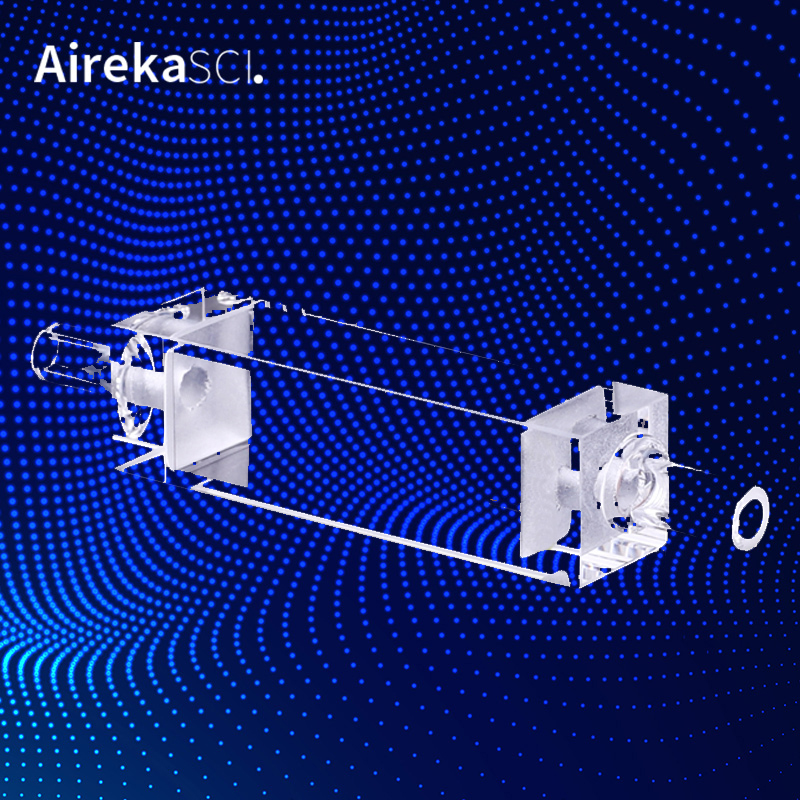
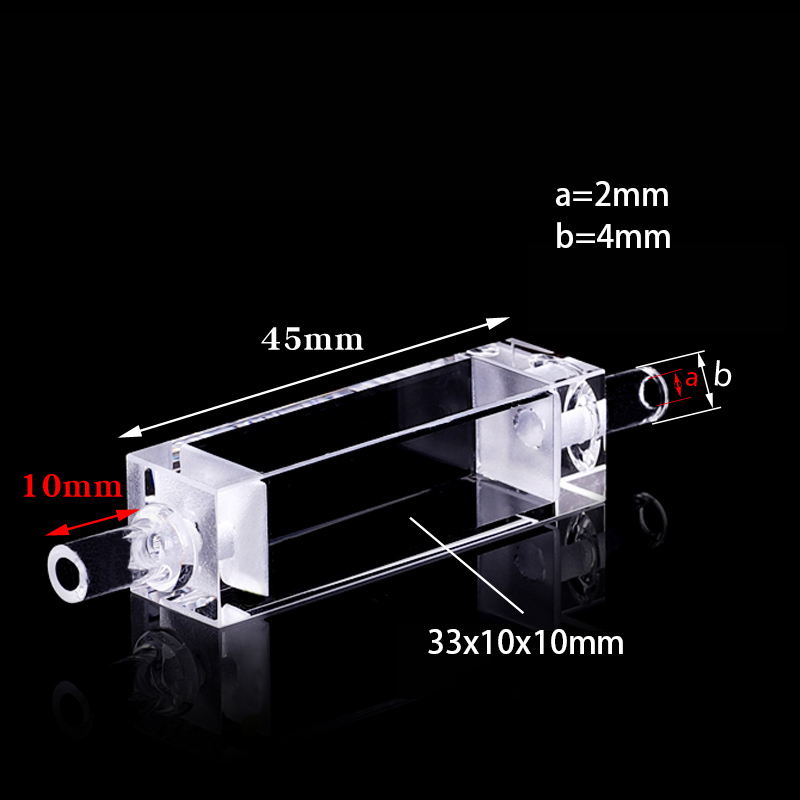
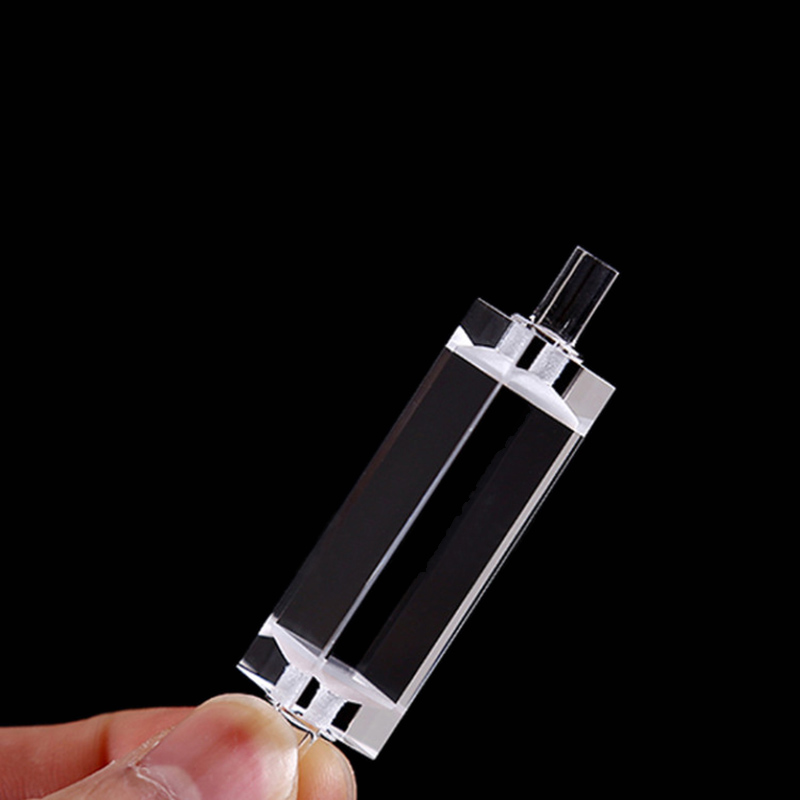
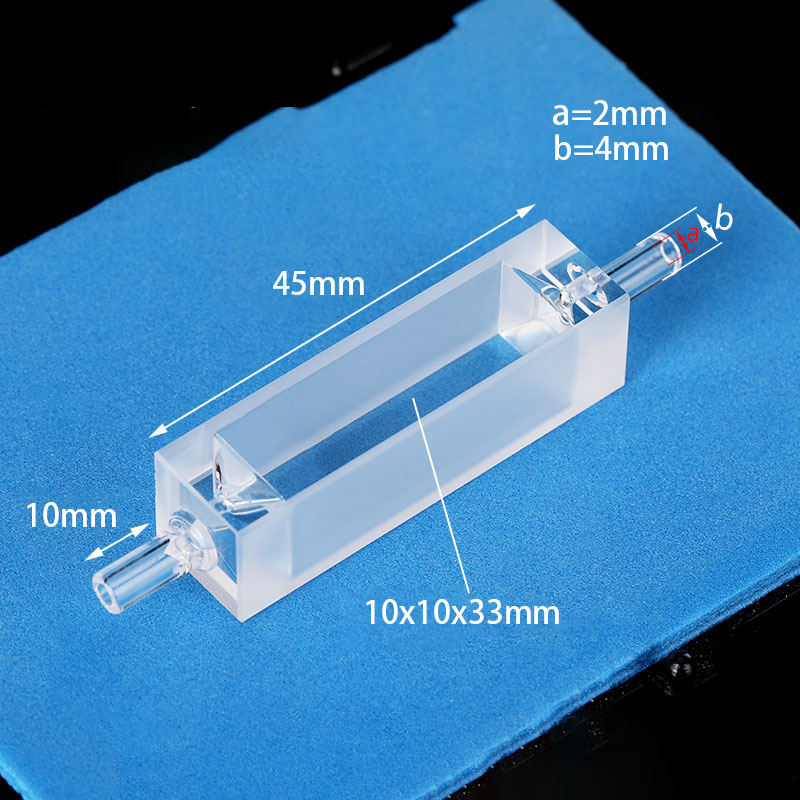
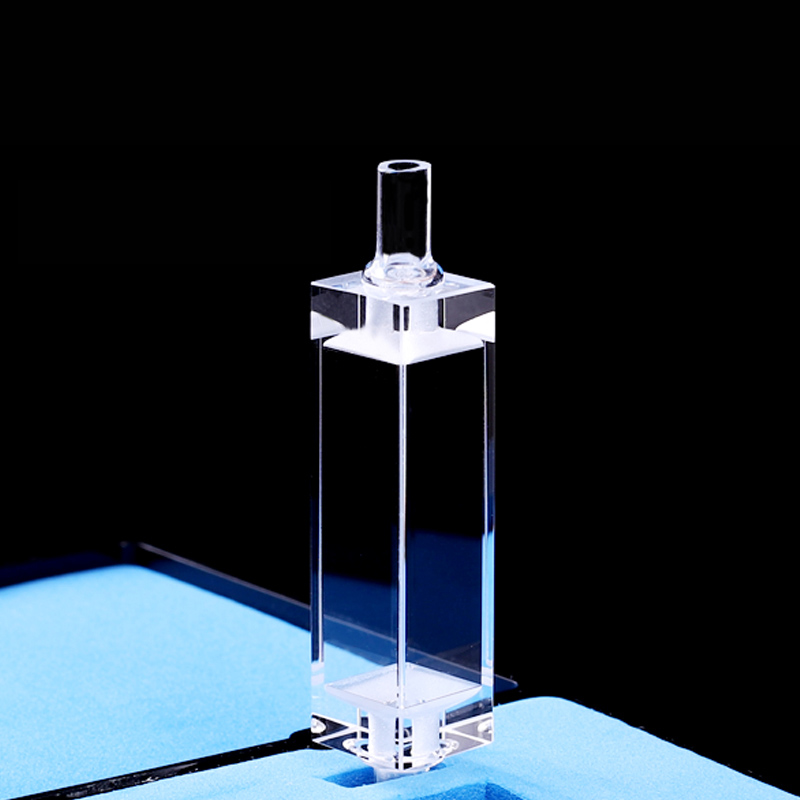
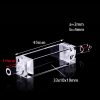
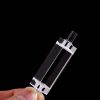
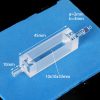




















There are no reviews yet.